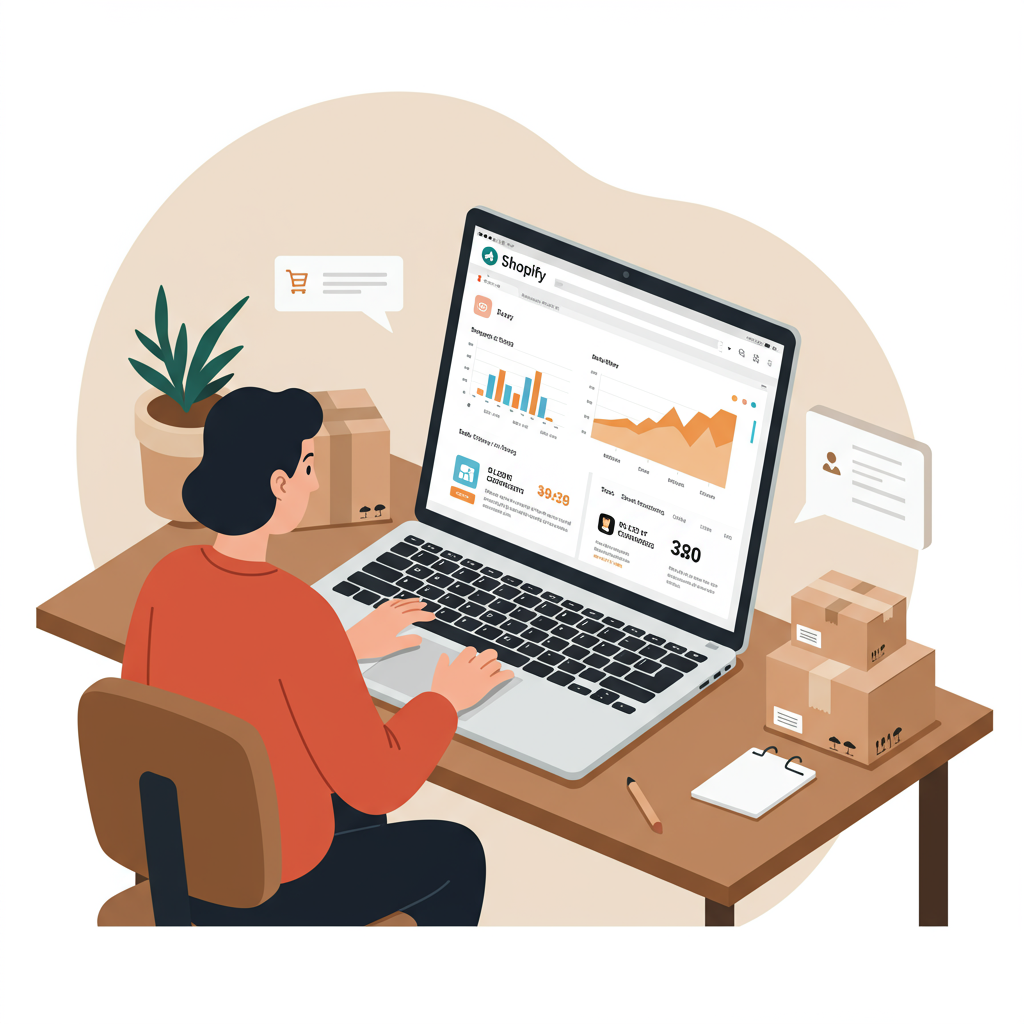A Comprehensive Guide to Building and Scaling Your Online Store
Hello fellow entrepreneurs! I’m here to share my journey and insights into one of the most exciting e-commerce models: dropshipping. If you’ve ever dreamed of running an online business without the hassle of inventory, this guide is for you.
Dropshipping, in its essence, is a retail fulfillment method where you don’t keep the products you sell in stock. Instead, when a customer places an order, you purchase the item from a third-party supplier who then ships it directly to the customer.
This model offers incredible advantages: low startup costs, no inventory management, flexibility to work from anywhere, and a vast product selection. It’s a fantastic entry point into the world of e-commerce.
Now, why Shopify? From my experience, Shopify is hands down the best platform for dropshipping. Its user-friendly interface, robust app store, excellent customer support, and scalability make it the ideal choice for beginners and seasoned merchants alike.
Let’s dive into the first crucial step: Niche Selection. This isn’t just about picking something you like; it’s about finding a sweet spot where passion meets profitability.
I always recommend starting with a niche you’re genuinely interested in. This makes the research and marketing process much more enjoyable and sustainable. However, don’t let passion blind you to market demand.
Research potential niches using tools like Google Trends, Amazon Best Sellers, and social media trends. Look for evergreen niches, trending products, or underserved markets. Avoid overly saturated niches unless you have a unique angle.
Once you have a niche, the next step is Product Research. This is where you identify the specific items you’ll sell. I look for products that solve a problem, evoke emotion, have a “wow” factor, or are difficult to find locally.
Consider products with good profit margins, ideally 20-40% or more, after accounting for product cost, shipping, and marketing. Test different price points to see what resonates with your audience.
I use tools like AliExpress, CJ Dropshipping, and even competitor analysis to find winning products. Look at what’s selling well for others and think about how you can offer a better experience or a unique bundle.
Step three is Finding Reliable Suppliers. This is paramount to your success. A bad supplier can ruin your reputation with slow shipping, poor quality, or non-existent communication.
I primarily use Oberlo (now integrated with Shopify) for AliExpress products, but I also explore platforms like Spocket, Doba, and SaleHoo for higher-quality, often US/EU-based suppliers.
Always check supplier ratings, read reviews, and ideally, order a sample product yourself to assess quality and shipping times. Clear communication with your supplier is key to resolving any issues quickly.
Now, for the exciting part: Setting Up Your Shopify Store. This is your digital storefront. After signing up for a Shopify account, choose a clean, professional theme that aligns with your brand.
Customize your theme with your logo, brand colors, and high-quality imagery. Focus on creating a seamless user experience. A cluttered or slow website will deter customers.
Don’t forget essential pages: About Us (tell your brand story!), Contact Us, Shipping Policy, Refund Policy, and Privacy Policy. These build trust and transparency with your customers.
Step five: Product Import & Optimization. Once your store is set up, it’s time to add your chosen products. Use apps like Oberlo to easily import products from your supplier.
Crucially, rewrite product descriptions. Don’t just copy-paste. Focus on benefits, not just features. Use compelling language that speaks to your target audience’s pain points and desires.
Use high-quality, multiple images and even videos if available. Set competitive yet profitable pricing. Consider offering bundles or upsells to increase average order value.
The next big hurdle is Marketing Your Store. You can have the best products, but if no one knows about them, you won’t make sales. I employ a multi-channel approach.
Start with Search Engine Optimization (SEO) by using relevant keywords in your product titles and descriptions. This helps organic traffic find you.
Social media marketing is vital. Identify where your target audience hangs out (Instagram, TikTok, Facebook, Pinterest) and create engaging content. Run contests, show product in use, and interact with your followers.
Paid advertising, especially Facebook and Google Ads, can provide immediate traffic. Start with a small budget, test different ad creatives and audiences, and scale what works.
Email marketing is your long-term asset. Collect emails from day one and nurture leads with welcome sequences, abandoned cart reminders, and promotional campaigns.
Step seven: Order Fulfillment & Customer Service. This is where the rubber meets the road. When an order comes in, you pay your supplier, and they ship it. Automate this process as much as possible with apps.
Proactive communication with customers about their order status and tracking information is crucial. Be prepared for customer inquiries, returns, and disputes. Excellent customer service builds loyalty and positive reviews.
Finally, Scaling Your Business. Once you’re consistently making sales, analyze your data. What products are performing best? Which marketing channels are most effective?
Look for opportunities to expand your product line, enter new niches, or optimize your ad spend. Consider hiring virtual assistants for customer service or marketing tasks to free up your time.
What do you think about this article? I’d love to hear your thoughts and if you found these steps helpful for your dropshipping journey.
Remember, dropshipping isn’t a get-rich-quick scheme. It requires dedication, continuous learning, and resilience. There will be challenges, but the rewards of building a successful online business are immense.
My advice is to start small, learn from your mistakes, and always prioritize your customers. With Shopify as your platform and a solid strategy, you’re well on your way to achieving your e-commerce dreams. Good luck!






